Baffling contrasts. 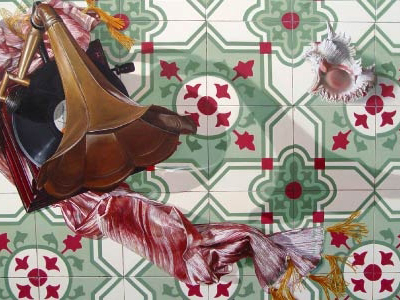 Is painting a way to mimic reality, or is it more about inventing a different one while fooling us in the process? Still life was cultivated four hundred years ago by Dutch masters, like Willem van Aelst, Rachel Ruysch and David van Heem. With the excuse to depict worldly possessions and whatnot, these painters explored “the given” (as Francis Bacon explained in his New Atlantis) the new scientific paradigm of the Baroque period.
Is painting a way to mimic reality, or is it more about inventing a different one while fooling us in the process? Still life was cultivated four hundred years ago by Dutch masters, like Willem van Aelst, Rachel Ruysch and David van Heem. With the excuse to depict worldly possessions and whatnot, these painters explored “the given” (as Francis Bacon explained in his New Atlantis) the new scientific paradigm of the Baroque period.
While reality (for Science) is just an inert object of study, it takes art to elevate this fact beyond the pale of phenomena. Art ponders banality and brings it back repeated and magnified, as if we had to miss it to enjoy it again. Regrettably, that genre of smartly re-presenting reality has disappeared.
Violeta Roque de Arana’s art brings back some of these forgotten themes: trompe l’oeil, refractions, and a preference for repetition. Her realistic paintings are careful, painstakingly detailed, rendered in a sort of photographic style, and with this level of craft, one sees why photography may be no match for painting.
Like the Dutch masters, Roque de Arana stages the unfolding of surprising moments, frozen in the obvious details of corners, tables, as if abandoned scenes of enjoyment. After the humans leave, these zoomed-in worlds become magical. Tarot cards spread on the tiled floor, each containing the fractured tableaux of our future, beetles going about their silent business; bees sucking honey, parrots picking a fruit and thrown flowers.
Roque de Arana arranges and shapes natures against object, soft next to hard, ephemeral over durable all amidst the echo of domesticity, refracted and multiplied against the glossy surface of a mirror.
I think it was Giorgio Morandi who suggested that a good painter needs to rearrange the truth and there’s something about the way Roque de Arana places these things. Say, the parrot next to the bird-like tile-floor design, the tea-cup’s curvy edge alongside the papaya slice, a bread piece almost touching the patterned mantle’s fold, the bowl’s empty space defined by its shadow or a white flower’s long stem deftly “floating” over the floor’s cracked and dirtied surface.
Roque de Arana’s deliberate contraposition of textures, shadows, colors, and forms, usually happen against this backdrop of long-established design: the Spanish tile. “Azulejo,” which comes from the Moorish word azzelij, has a long tradition of intertwining and weaving flora and geometric patterns whereby negative spaces emerge as stronger elements than the positive shapes.
Behind Roque de Arana’s formal reiterations is the very idea of refocusing our attention (reflection reverses our sense of organization, as when left-right relations are mixed-up). But I think the artist just loves to explore designs and its accidents. Just as much as Renaissance artists were captivated by the possibilities of intricate patterns, Roque de Arana loves to show us the potential of little differences in sameness.
In one painting entitled Against the Current Roque de Arana shows a turtle clumsily walking on a shallow tiled sink. You can see the water mass running through the crevice of the tiles, but what matters is the turtle’s carapace as shape, next to the round sink-grille. Indeed, beauty is about baffling contrasts.
By Alfredo Triff

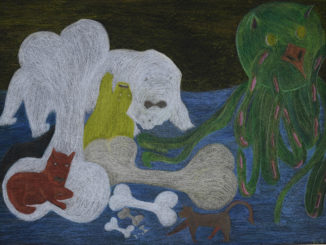
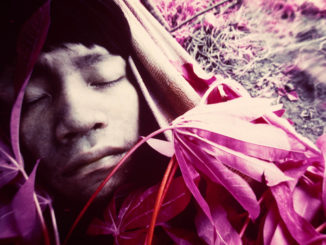
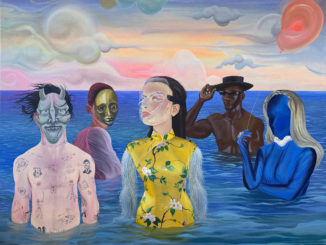
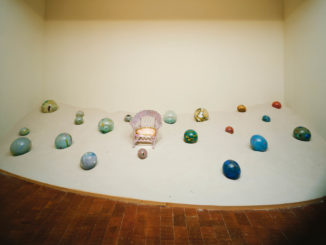
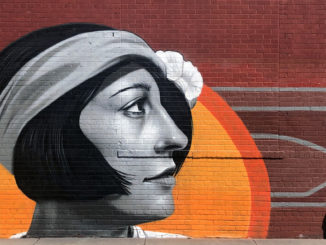
Be the first to comment